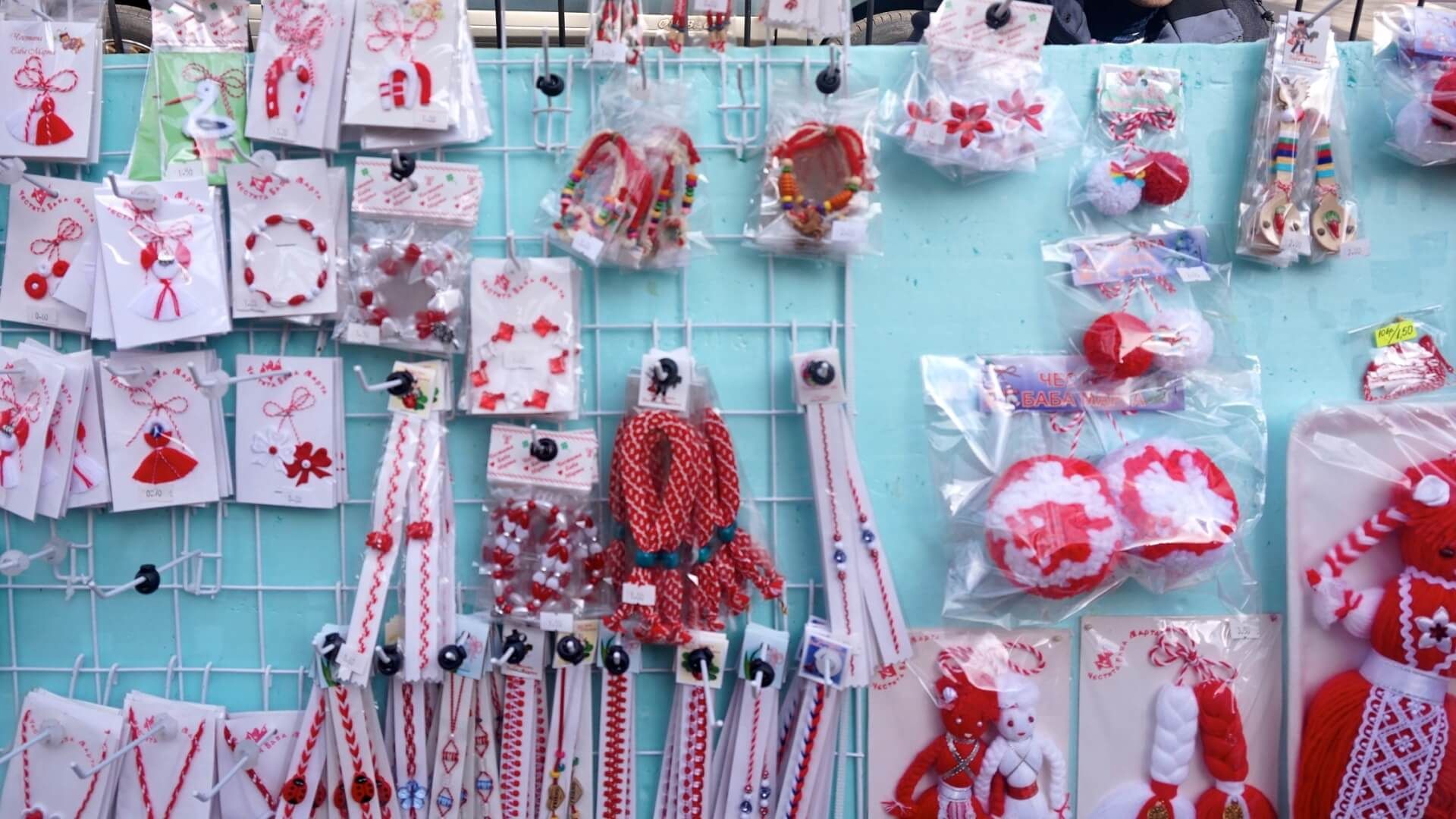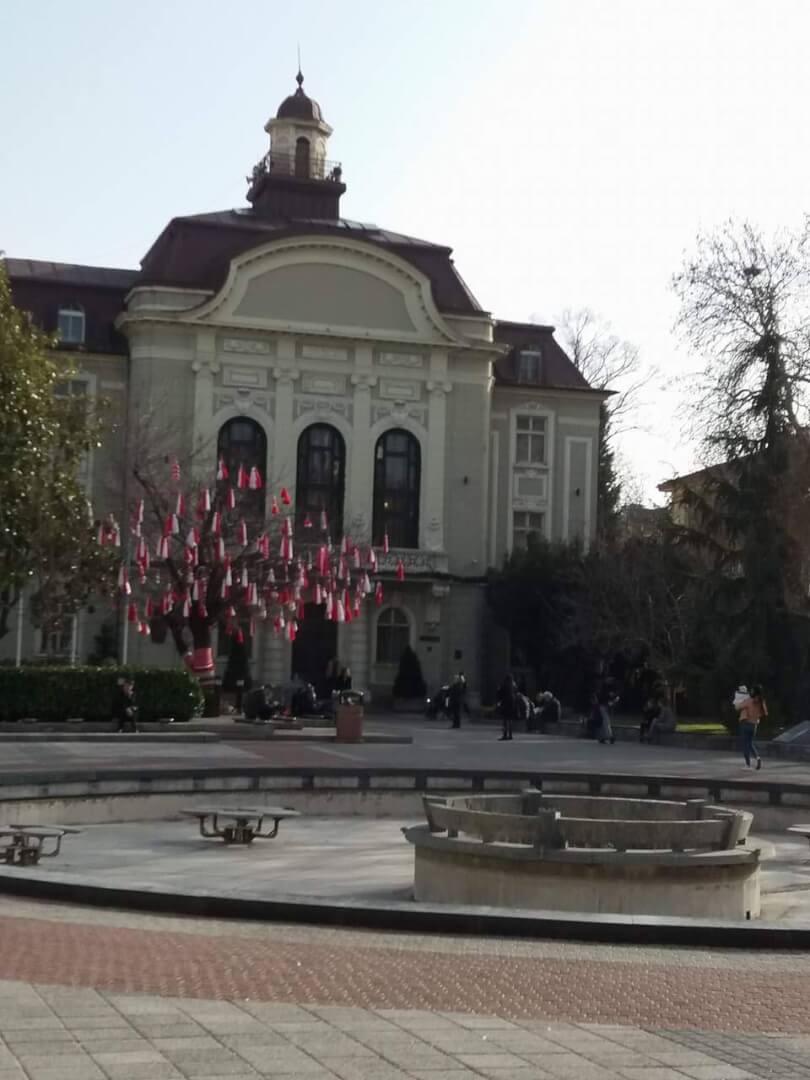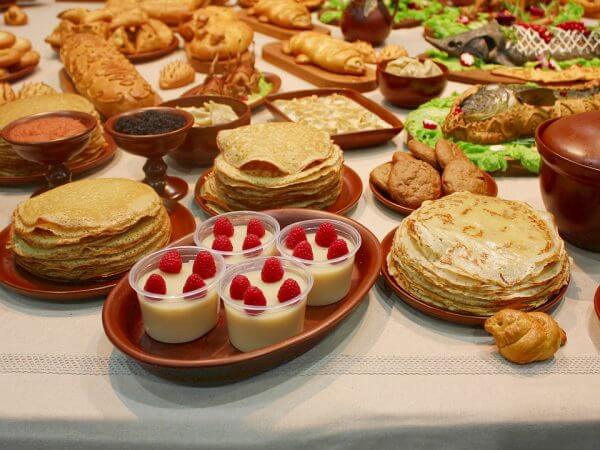
Welcoming spring in Eastern Europe
Last month I visited Sofia, Bulgaria’s capital. It was the end of February and the weather was still cold but sunny, and it was lovely to spend time walking the streets of the city. At every corner I could find stalls selling nothing but red and white wrist bands, sometimes adorned with two small dolls made of combined red and white yarn. Not the typical postcards, magnets, been-there-done-that t-shirts that can be found in any touristic place, just red and white woven threads, sold in buy-ten-pay-one deal packages. You could see people of all kinds stopping at the stands; business men, school boys, young girls and grandmothers, all purchasing the tiny bracelets.
Even though I didn’t buy my own bracelet, I found out what they were and why everybody was buying one. They are called Martenitsi and are the symbol of Baba Marta Day, a Bulgarian holiday celebrated on the first of March to welcome spring. On that day people give each other these wrist bands, which are to be worn until a blossoming tree is seen. Only then people can take off their Martenitsa and hang it on a tree. That’s why throughout March in Bulgaria you can see a lot of trees festooned in red and white threads, symbolising rebirth or a new beginning.


On the same day of Baba Marta, not far from Bulgaria, Romanians and Moldovans celebrate Mărțișor (Little March), the beginning of spring, with red and white strings given to each other to bring strength and health to the person wearing them. Both women and men keep the string pinned to their clothes until the end of March, when they tie it to a fruit tree. In some regions, instead of the string people wear red and white necklaces with a hanging coin as a charm. After some time, they use the coin to buy red wine and sweet cheese which are intended to keep them healthy and joyful. Even if today the string is no longer considered a powerful talisman like in the past, people maintain the tradition, which is seen as a way to show friendship, love, respect and appreciation to others.
The Balkans are not the only Eastern European area where spring is welcomed with particular symbolism. Some years ago I happened to be in Russia at the beginning of March and I wasn’t happy to discover that I had just missed Maslenitsa, the Russian carnival. The celebration anticipates Great Lent and coincides with the end of winter and the beginning of spring. Maslenitsa takes place over a whole week and each day of the celebration has its own rules. What doesn’t change is the food: the typical thin Russian pancakes called blinys are in fact the protagonists of the celebration. On Monday, the day called vstreča (meeting), people meet and start preparing food for the festivity. On Tuesday, single boys and girls get to know each other and eat blinys together, while on Wednesday mothers invite their daughters’ boyfriends over to have the homemade pancakes. On Thursday the most important thing is to have fun: clowns entertain children while adults sing and dance in the streets, having blinys to recover from vodka. On Friday men invite their mothers-in-law for the traditional treat and try to impress them with their culinary skills. On Saturday and Sunday people get closer to Great Lent and keep eating blinys. Apart from the fact that the pancakes are very tasty, their round shape reminds of that of the sun, which makes its come-back in spring after a long, cold winter. That’s why Maslenitsa is also the celebration of spring.

Balkans, Bulgaria, featured, Moldova, Romania, Russia, Spring